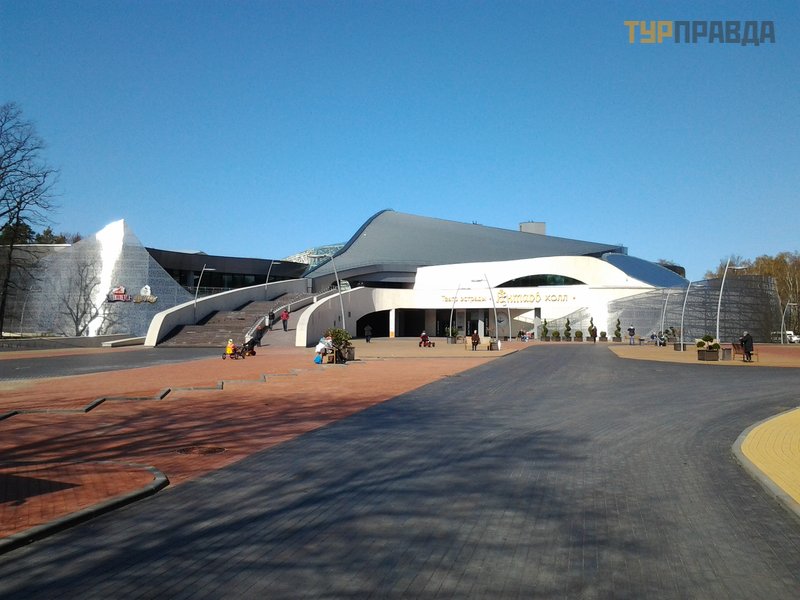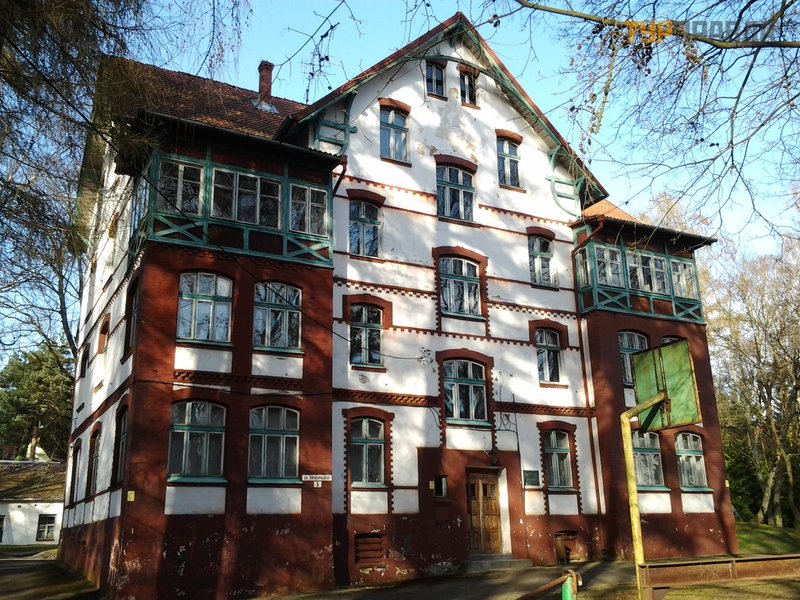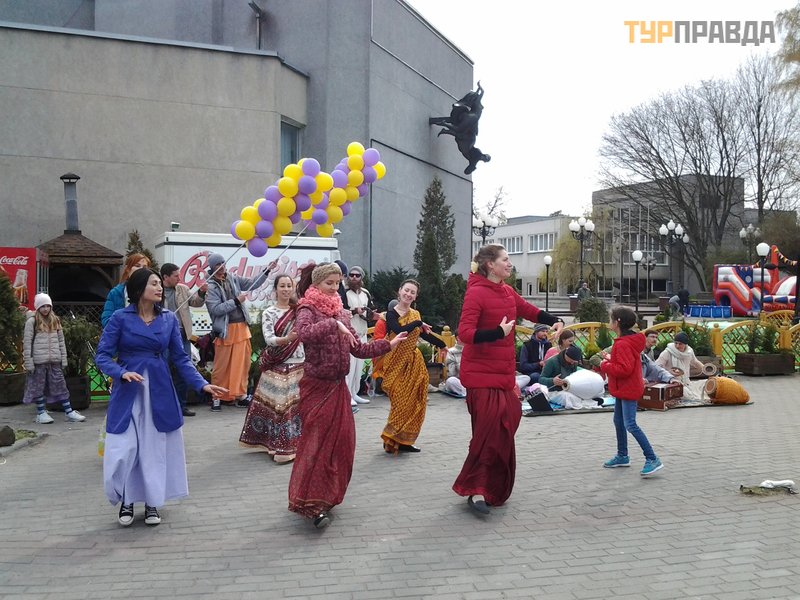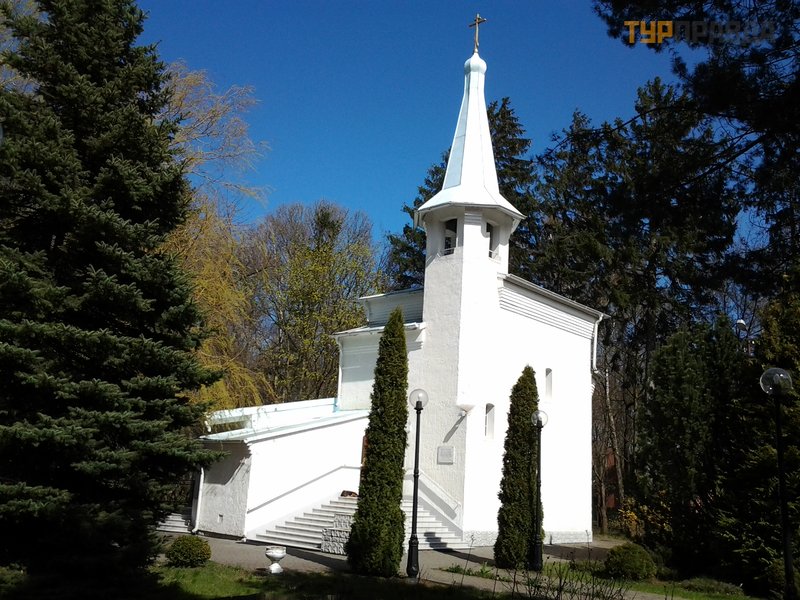Another Russian enclave in the west.
Again I ended up in the west of our country, this time in the small resort town of Svetlogorsk. This is the former Prussian resort of Rauschen, which went to the USSR after the Second World War. Located on the Baltic Sea, area 2 sq. km, the population is slightly more than 10 thousand people, in the summer it increases four times.
For the first time, Rauschen is mentioned in 1258, when the Teutons installed a mill on the stream. Now this place looks like this: width: 800px" />
In the 20th century, the town developed intensively as a seaside resort, and during the Second World War, wounded Luftwaffe pilots were treated there. Immediately after the war, they were also treated, but already by our fighters. The tower of the hydro-mud bath is the hallmark of the city (height 25 meters, observation deck, sundial on the wall): /01/1500184.jpg" style="height: 600px; width: 800px" />
The building is covered with wild grapes and is absolutely green and alive in summer. The Germans pumped sea water there for hydrotherapy. Now the building is used in exactly the same way, for treatment with sea baths and mud, only it now belongs to the Svetlogorsk military sanatorium of the RF Ministry of Defense, in which I, in fact, rested in April of this year. Baths are strong, very relaxing, mud - so-so, sapropel, some frivolous, cannot be compared with old Russian or even Sestroretsk mud. But the mineral water in the source right in the town is effective, at the exhibition in Cairo it took 3rd place and received some kind of medal.
Nearby is an indoor pool with sea water, which is pumped directly from the sea. 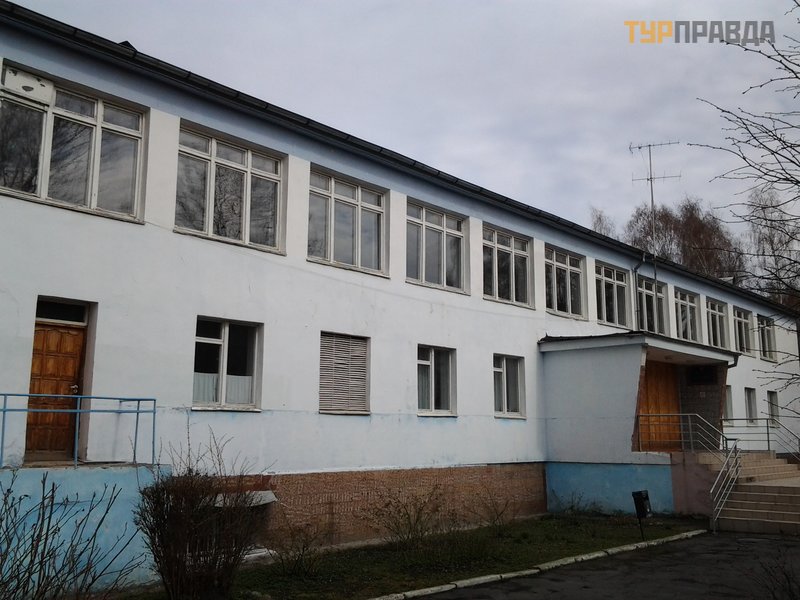 Or rather, they pumped it in, because the pool was shattered to such a state that it became life-threatening, and it was simply closed. They promised to build a new one nearby, but I didn’t see any movement, not even a banal fence. Because of this pool, everyone went to the military sanatorium all year round, but now it is interesting there only in summer, when you can swim in the Baltic Sea.
Or rather, they pumped it in, because the pool was shattered to such a state that it became life-threatening, and it was simply closed. They promised to build a new one nearby, but I didn’t see any movement, not even a banal fence. Because of this pool, everyone went to the military sanatorium all year round, but now it is interesting there only in summer, when you can swim in the Baltic Sea.
There are two buildings in the sanatorium, a new one: 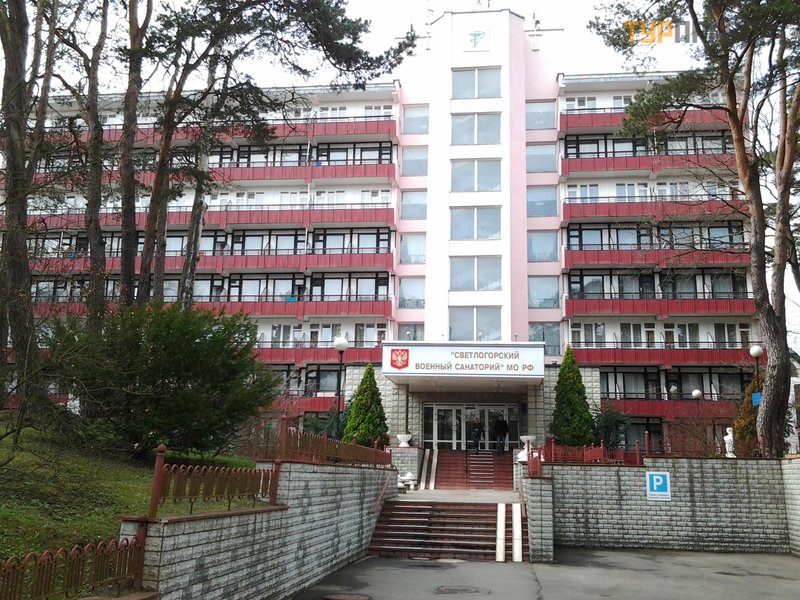
and old: 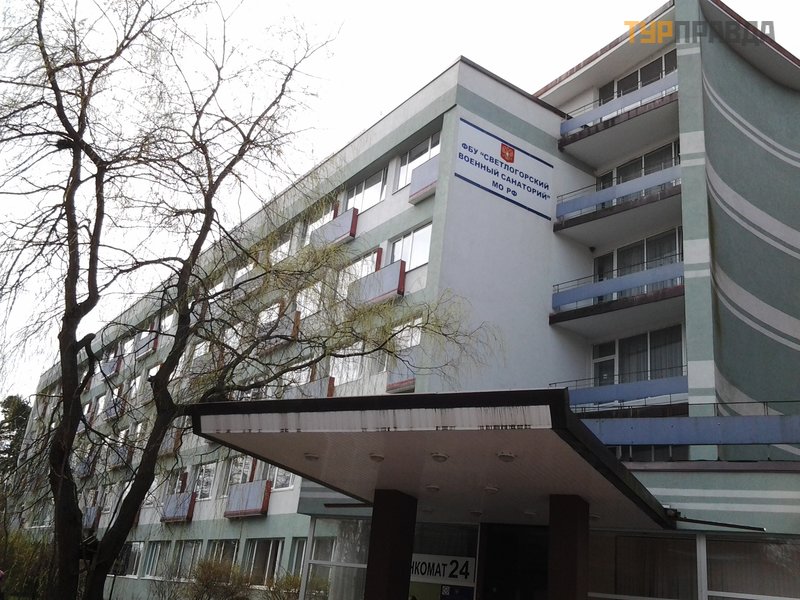
The third and fourth balconies on the right on the top floor are mine, where I rested from everyday work. I will write about the sanatorium separately, in the "Hotels" section, and now let's return to the town.
Svetlogorsk is a very clean, cozy and calm city, everything here is imbued with the spirit of the resort, even the local population is very phlegmatic and unhurried. Amber is sold at every step, the extraction of which in the Kaliningrad region is simply huge, it so happened that almost all the amber of the world is concentrated here, and a little more in Lithuania. 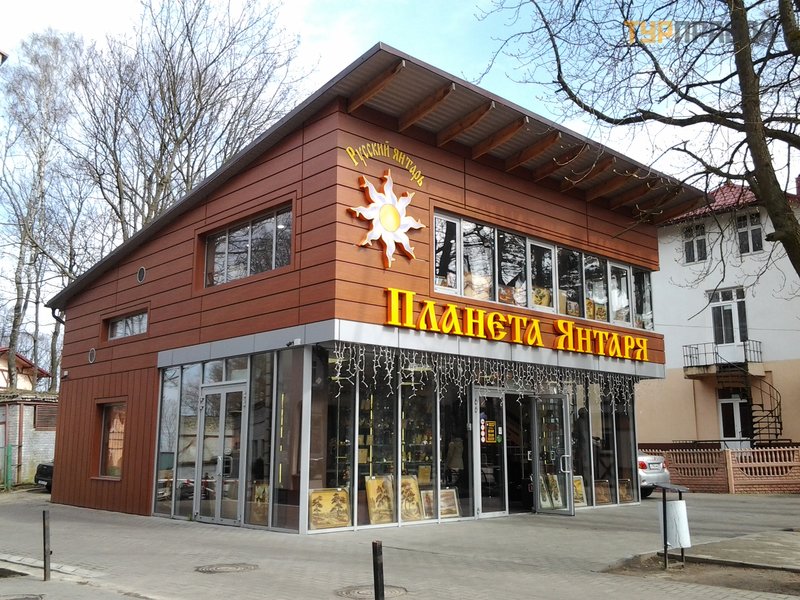 It can even be collected on the shore after a strong storm, when a lot of algae are thrown ashore, and with them adherent clay and amber in this clay. Locals say that with good skill, you can collect amber for several tens of thousands of rubles at a time, but the storm should be rather big.
It can even be collected on the shore after a strong storm, when a lot of algae are thrown ashore, and with them adherent clay and amber in this clay. Locals say that with good skill, you can collect amber for several tens of thousands of rubles at a time, but the storm should be rather big.
In the morning, a whole army of janitors comes out onto the streets of the town, sidewalks and roads are literally licked, everywhere is very clean and tidy. There are no people with beer on the benches, the ban on drinking in public places is strictly observed. If there is a need to drink beer to the sound of the waves, they act in a European way: they wrap the bottle in a paper bag, which they give in the same store.
Many people shoot beautiful sunsets over the Baltic with cameras: ="height: 600px; width: 800px" />
The sun is sinking very quickly, literally falling into the sea.
On the shore, a sculpture of a sea princess, pretty and slender: style="height: 600px; width: 800px" />
By the way, on the entire coast there is free Wi-Fi from Megafon, not very fast, but quite suitable for correspondence and chat on social networks, only Skype is stupid.
The beaches of Svetlogorsk are narrow, they can't even be called beaches, just a narrow strip of sand between the edge of the sea and the cliff above it. This is, perhaps, the widest strip of the beach: height: 600px; width: 800px" />
Going down to the water is very difficult, because the town is on a steep bank:
Once there was an elevator, but it was broken a long time ago, the photo shows the remains of the foundation from it: 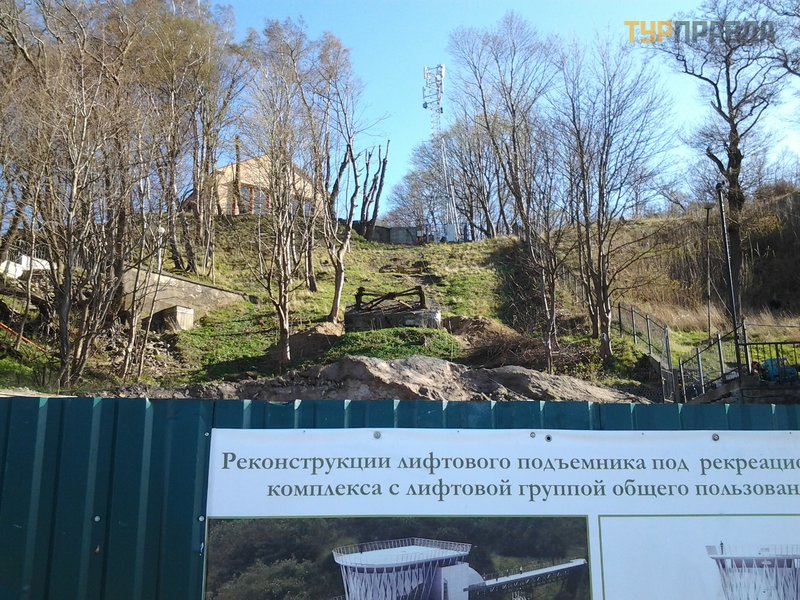
A new elevator is being built with an observation deck and a restaurant at the top, though slowly: 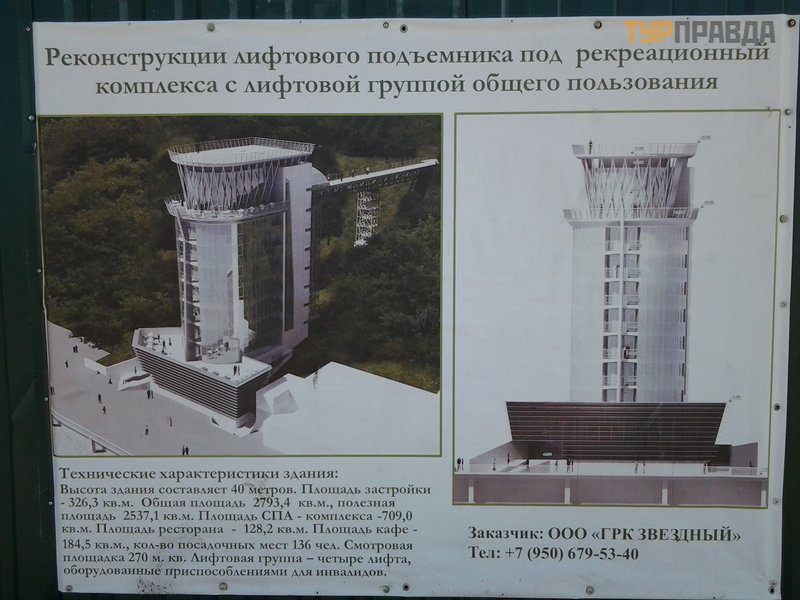
In general, people go to Svetlogorsk to rest because of the very comfortable temperature - in summer it rarely exceeds 25 degrees, and in winter the snow does not last long. The town has a huge number of pine trees, whose phytoncides, together with sea air, create an unusual air cocktail that cures pulmonary diseases and stabilizes blood pressure.
As in any self-respecting resort, it also has its own eagle, only it looks as aggressive as in the war on German standards: 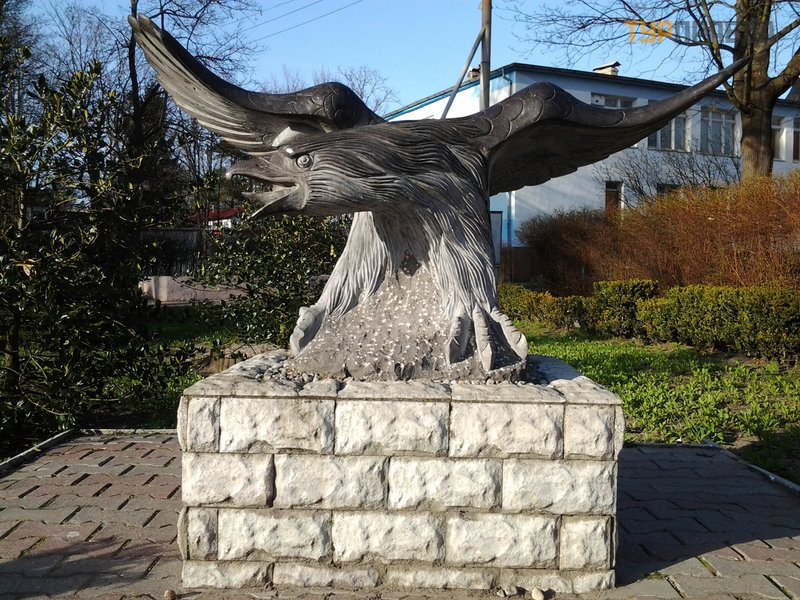
In the city park, there is a famous sculpture by Herman Brachert, "Carrying Water":
It is interesting because Brachert created it in 1944, when it was already clear that the end of Nazi Germany was near, but out of love for the city, he put it here. It is said that he sculpted a sculpture of his wife. Well, for me, it’s nothing at all, he had an attractive wife.
Another sculpture, to which all tourists are brought, and which, as the guides say, the sculptor also sculpted from his wife (apparently, it is customary among sculptors) - "The Frog Princess" (sculptor Oleg Melekhov, 2005). It was made in the spirit of the Copenhagen Little Mermaid, and is shown at the moment when the frog has already shed its frog skin and turns into a beautiful princess: 00/01/50/01/1500164.jpg" style="height: 600px; width: 800px" />
Her lips always shine, because suggestible tourists have a belief that if you kiss her on the lips (a frog! ))), you will be happy.
In Svetlogorsk there is a very good organ hall "Makarov": " style="height: 600px; width: 800px" />
This is the former German Catholic chapel "Star of the Sea". In 1995, a dilapidated building of the chapel was bought and restored with his own money by a musician named Makarov, who brought an organ with 1.400 pipes from Germany, and now this hall is recognized by experts as the best among its kind in the countries of the Baltic coast, like this. Concerts are held there, the hall is always full: 600px; width: 800px" />
In general, there are many old German buildings in Svetlogorsk in very good condition. During the offensive of our troops, it was decided not to use heavy artillery and aircraft, and the Germans were driven out only by infantry supported by tanks.
The roads are still paved with paving stones, and German communications work flawlessly. Pay attention to the fit of the hatch and the opening (I immediately recall the absence of gaps in the body parts of German cars): 01/1500155.jpg" style="height: 600px; width: 800px" />
The storm water has been working for centuries: 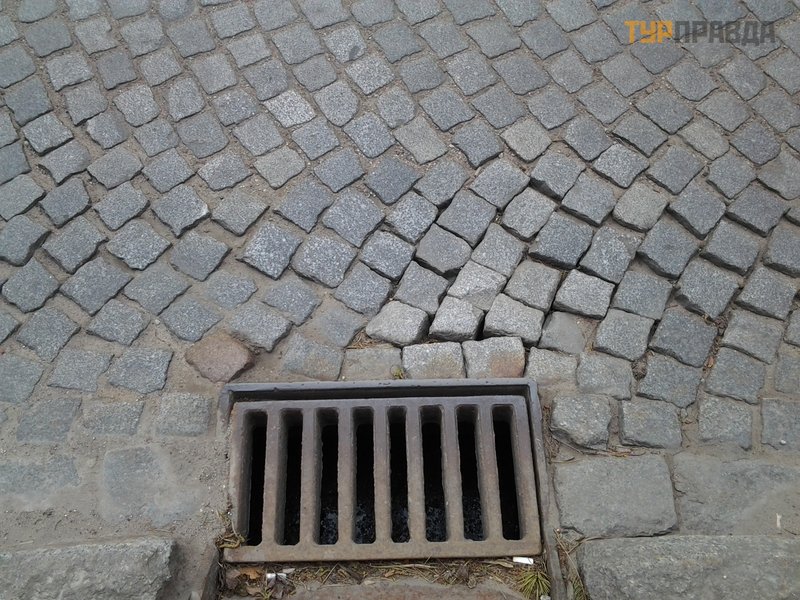
although some of the iron grates have already been stolen: 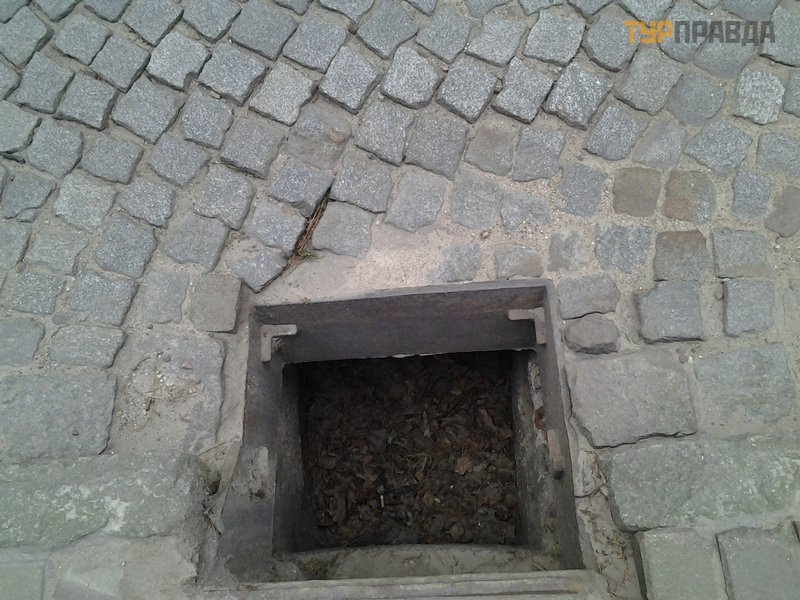
I don't understand how cars don't go there.
Here is the Old Doctor Hotel, which has been preserved almost in its original form: .jpg" style="height: 600px; width: 800px" />
And this is the doctor himself, Academician Pavlov, who taught dogs using their unconditioned and conditioned reflexes, as far as I remember from the school course: 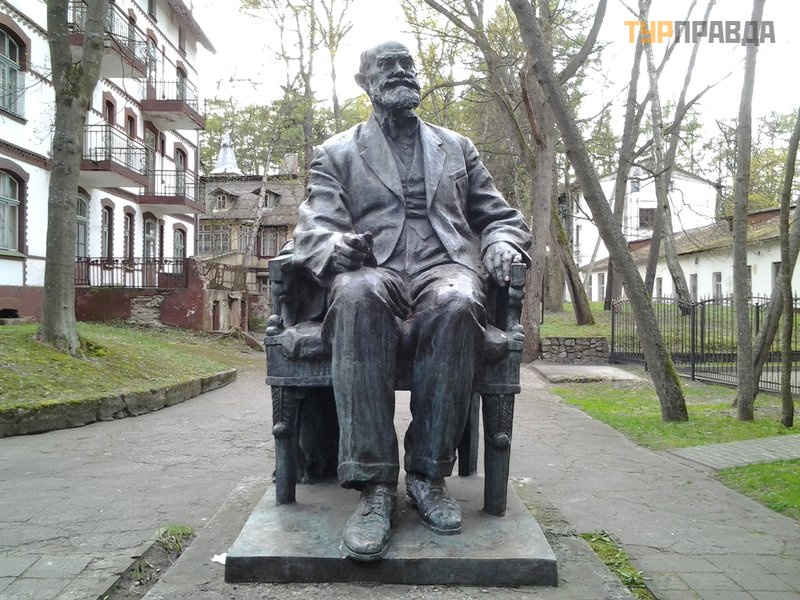
The buildings of the Kurhaus, the main hotel of the Prussian Rauschen, have been preserved. This is the main building where the famous German writer Thomas Mann stayed: style="height: 600px; width: 800px" />
And these are German Kurhaus villas converted into apartment buildings: 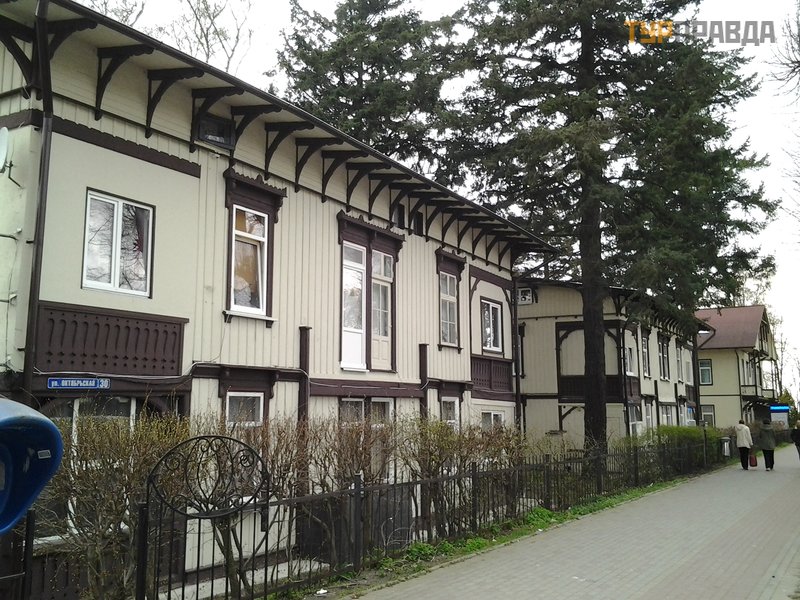
Another notable building, "Hunting Lodge" (1929): 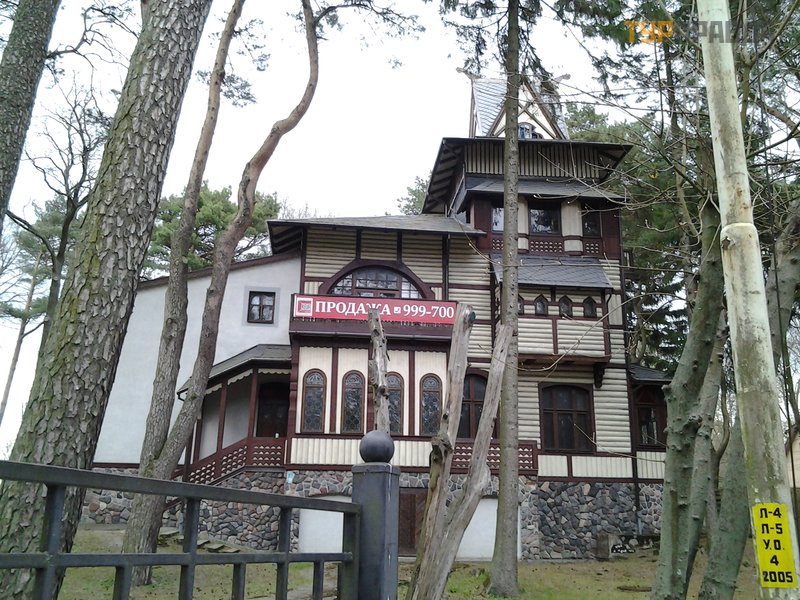
It was named so because after the war a huge number of hunting rifles were found in this house. This house is also called Goering's Dacha (not the one that was the main one in the Luftwaffe, but the architect of the same name. Until 2000, this house was the 6th building of the military sanatorium, then it was sold to private hands, completely restored, including beautiful stained-glass windows, and now it's for sale again. To the question "How much they ask" an exhaustive answer was received: "A lot". This house is also known from the movie "Little Red Riding Hood" with Yana Poplavskaya in the title role, there it is the house of the astrologer.
Many villas became the property of the Svetlogorsk military sanatorium, here is the dormitory building: .jpg" style="height: 600px; width: 800px" />
In such buildings from old German houses, old people who have a rest in a sanatorium like to settle, they have little comfort there, but a special old man's aura (chess, evening tales "for life"), therefore, when settling in, they always ask for just such small buildings. Now most of them are closed for renovation.
This is also an old German building, and also a sanatorium, it hosts physiotherapy exercises, massage and strength exercises:
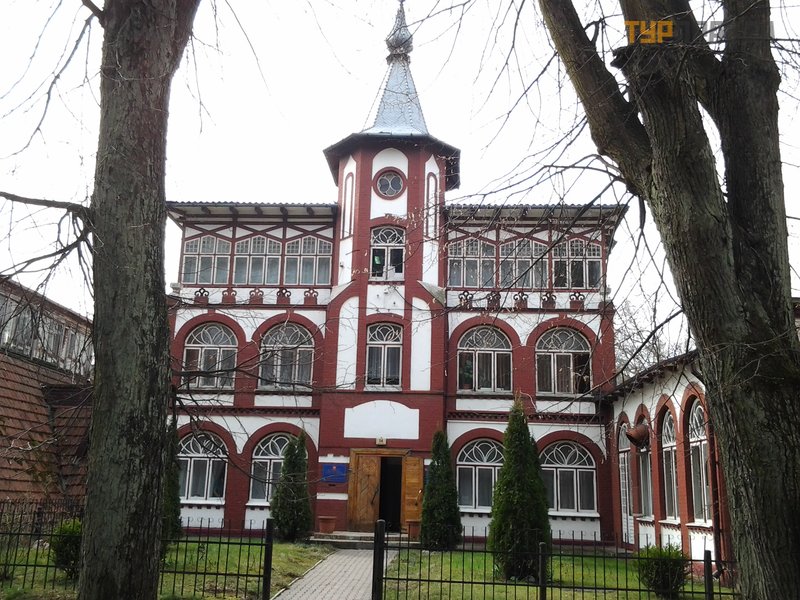
And this is the administration building of the military sanatorium: 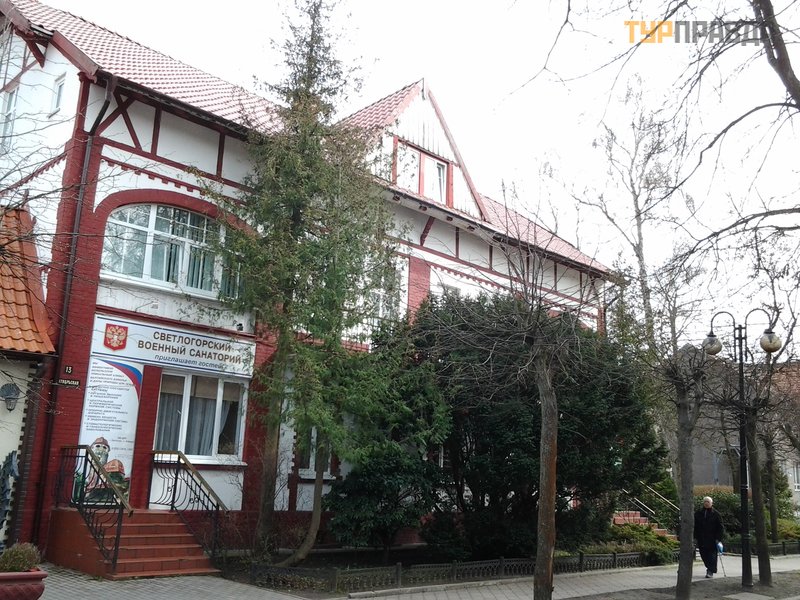
Private traders also keep Raushen's style. Here is this house of 1926, the owner renovated it, completely preserving the style and even the materials of that era (only the windows are modern): /00/01/50/13/1501350.jpg" style="height: 600px; width: 800px" />And here is a house of cheerful Ukrainian colors, by which I immediately assumed that its owner is a Ukrainian. 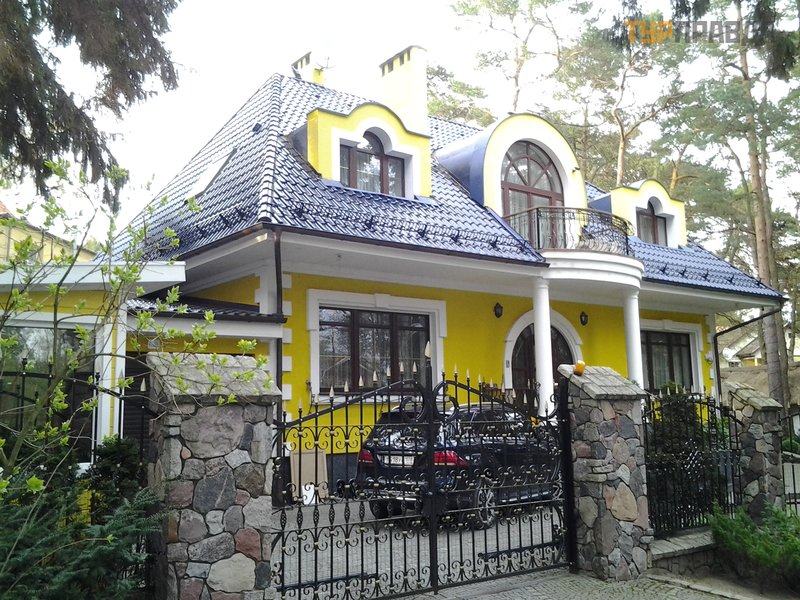 Alas, the St. Petersburg license plate code on the car reminded me that I was at home. In general, most of the houses on the coast were purchased by Moscow and St. Petersburg residents. The very ones who once bought houses in Jurmala and Ust-Narva.
Alas, the St. Petersburg license plate code on the car reminded me that I was at home. In general, most of the houses on the coast were purchased by Moscow and St. Petersburg residents. The very ones who once bought houses in Jurmala and Ust-Narva.
By the way, about Jurmala. From there, KVN and other entertainment left. So, especially for KVN in Svetlogorsk, a huge modern variety theater was built - Yantar Hall: 01/1500170.jpg" style="height: 600px; width: 800px" />
The complex was built from 2008 to 2015 and has already hosted the Vocal KiViN festival. We went there to the premiere of the new film "The Crew" (not impressed) and to the unusual exhibition "People of the Sea" about the culture of Thailand, Myanmar, India and many other countries (the exhibition was very impressive). 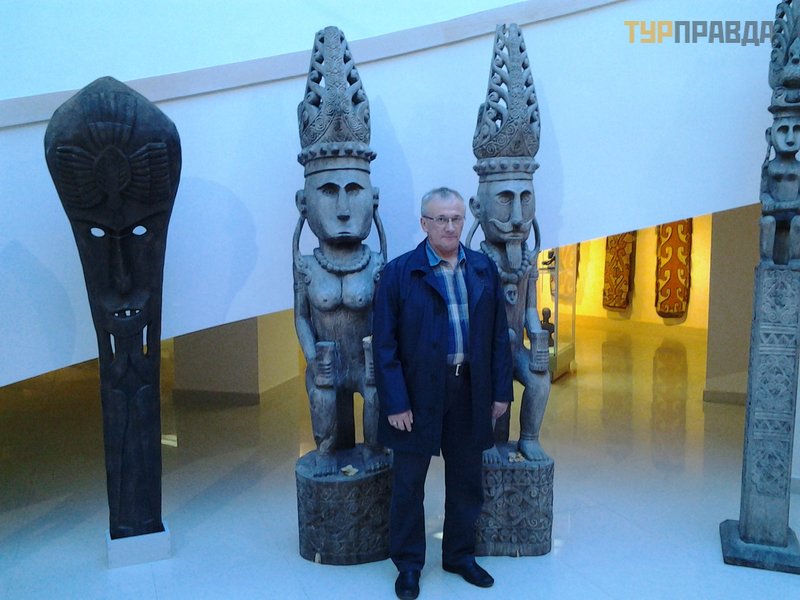
From the unusual exhibits - here are the masks for the initiation rite (I can't even imagine what it is): 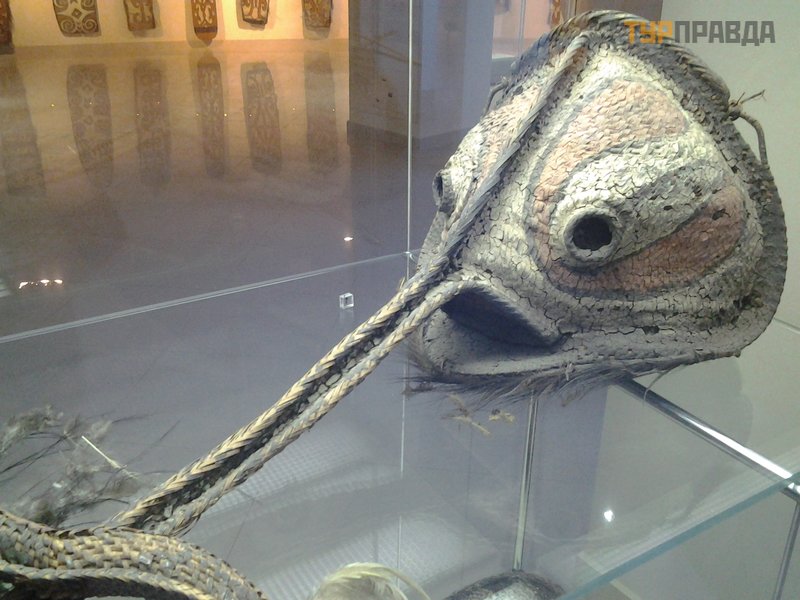
and some fallocrypts: 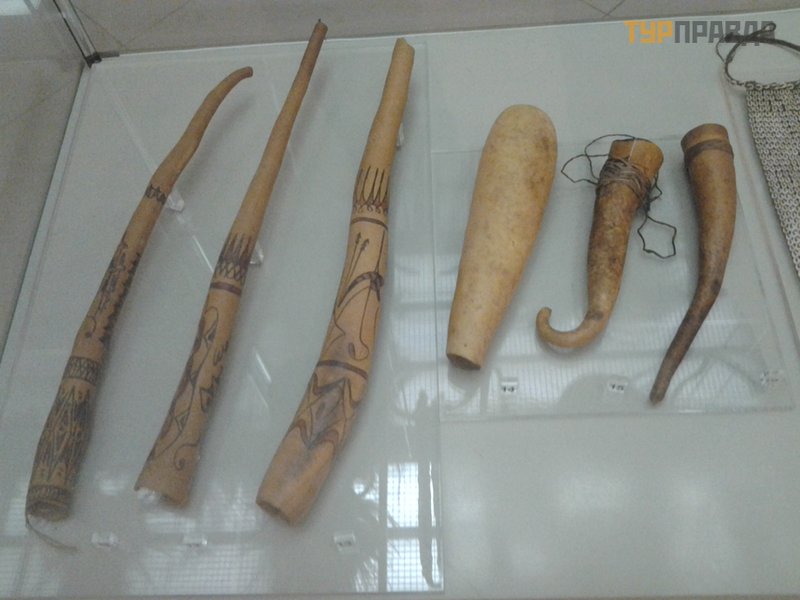
The first root of the two-root word makes it clear what it is, but the third phallocript from the right belonged to a clearly tough guy. The second on the right is more like a junkie.
Not far from Yantar Hall is the hotel "Rus", famous only for the fact that Anatoly Sobchak died suddenly in it in the winter of 2000. 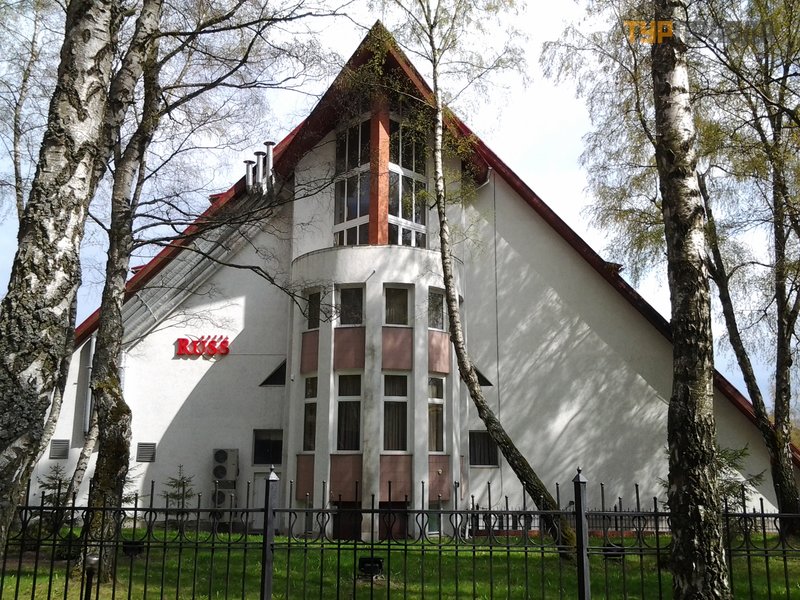
Apparently, not everyone benefits from the sea air of the Baltic Sea. Side view of "Rus":
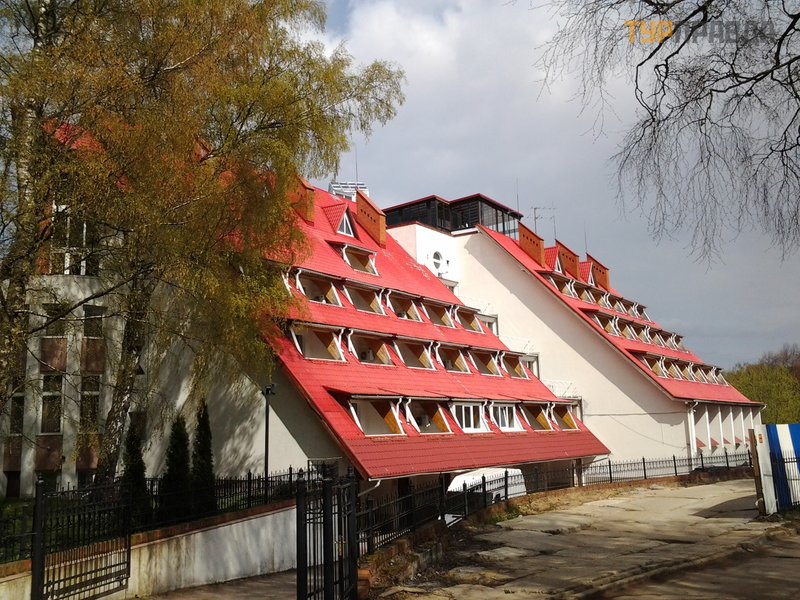
There are also abandoned buildings that have fallen into disrepair. These are buildings of the former sanatorium of trade unions: width: 800px" />
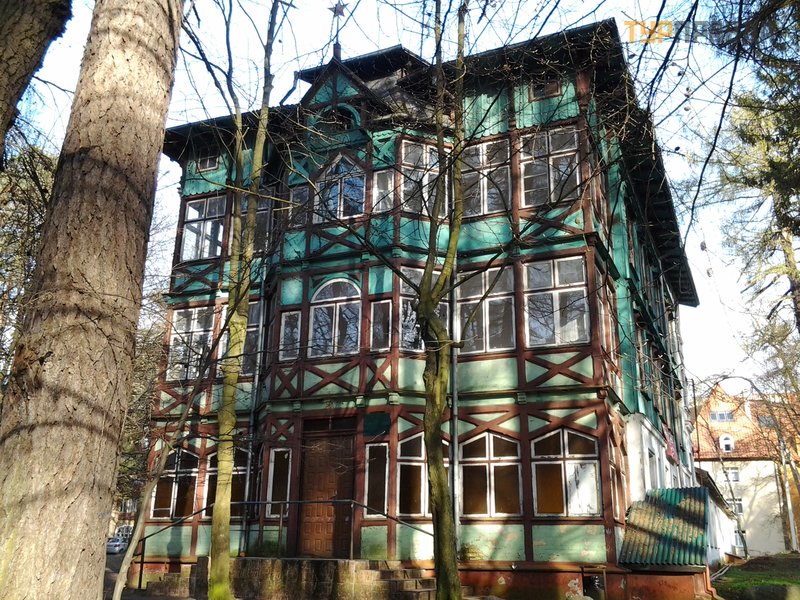
They are not taken apart or demolished, but are waiting for their investor to be repaired.
The sculpture "Sea Symphony" (architect Nikolai Frolov, 1980, year of death of V. Vysotsky) was installed at the club of the Svetlogorsk military sanatorium: 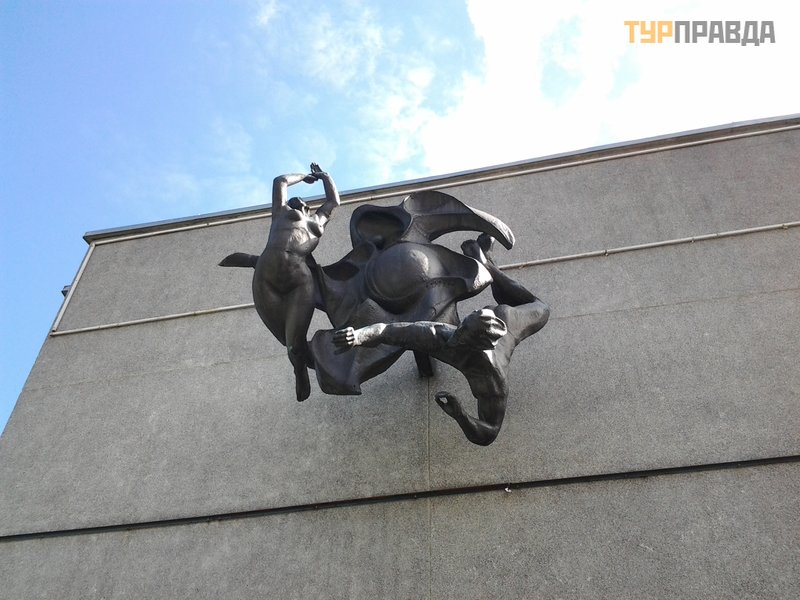
The face of a man falling into an abyss resembles the face of Vladimir Vysotsky, a woman is trying to pull him out of the depths into the light. The sculpture is singing, made in such a way that it makes sounds in strong winds, however, very rarely. Every year in July, this building hosts the international film festival "Baltic Debut".
One day, Krishnaites settled down under this composition, merrily sang, danced and treated passers-by with sweets. Cheerful guys, positive: : 800px" />
There is a holy and terrible place in Svetlogorsk. This is a memorial church on the site of the tragic death of the entire kindergarten on May 16.1972. 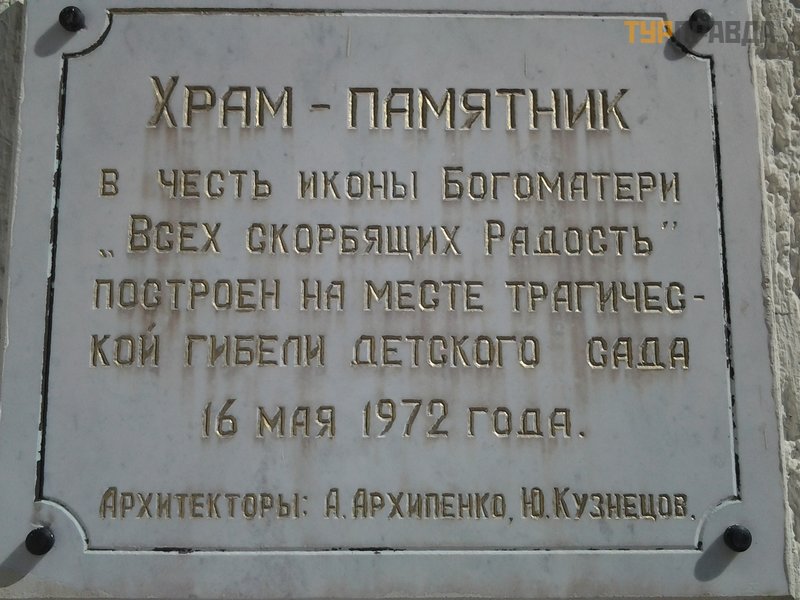
On that day, the AN-24 military aircraft of the Baltic Fleet chose the wrong height, caught the crowns of trees, crashed on the kindergarten of this small town and completely destroyed it, exploding kerosene tanks incinerated all life around. By a fateful coincidence, just at that time, all the children returned from a walk and sat down to dinner. In an instant, the souls of twenty-four children, two teachers and a cook soared to heaven. The entire crew of the aircraft of eight people also died.
On the same day, in the evening, nothing reminded of the tragedy, all the bodies were taken out, the building was dismantled to the brick, and a square was laid out in its place. Radio communication was turned off in the city, all buses and trains were cancelled. 10 thousand people came to the funeral of the children, that is, all the inhabitants of the city. It was impossible to talk about this for many years. Only in 1994.20 years after the tragedy, this temple was built: .jpg" style="height: 600px; width: 800px" />
The temple is modest, there is no fuss and unnecessary magnificence: 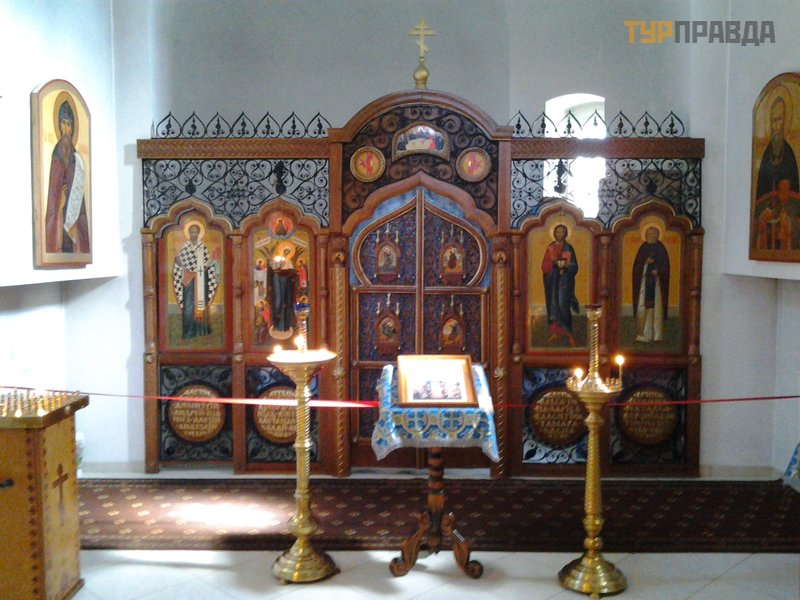
The eternal memorial note lists the names of all those who died that day: 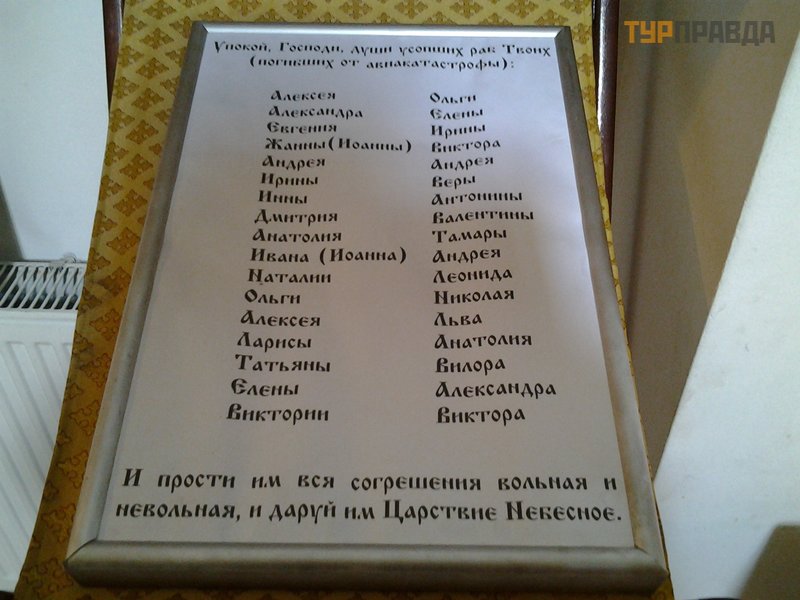
And even photos of angels who remained forever children: 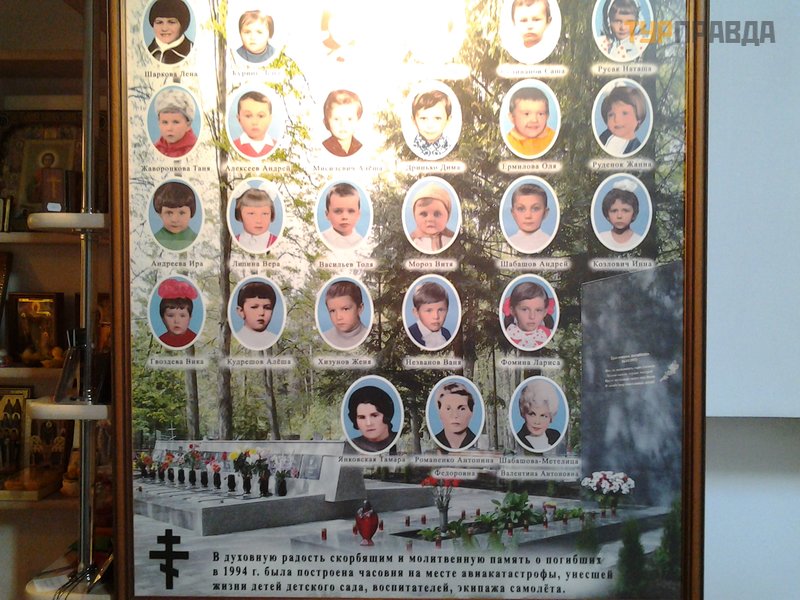
Looking at them, I involuntarily imagined my relatives next to these photos - and cold sticky horror bound my whole body from head to toe... I could not stay in this place for a long time, I left.
The parents of those children gather in this temple on May 16 every year. I left home a little earlier, and I wouldn't go there on such a day, even out of curiosity.
Next to the temple, a Scandinavian pine grows, the same one that was brought to the Curonian Spit to save it from a sandy disaster, when the sands began to move: 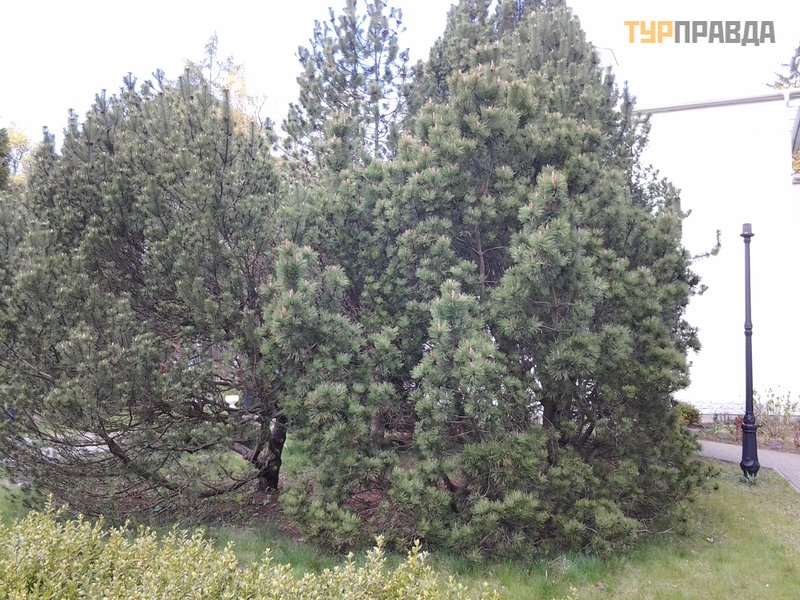
And here is the main city temple, Seraphim of Sarov: 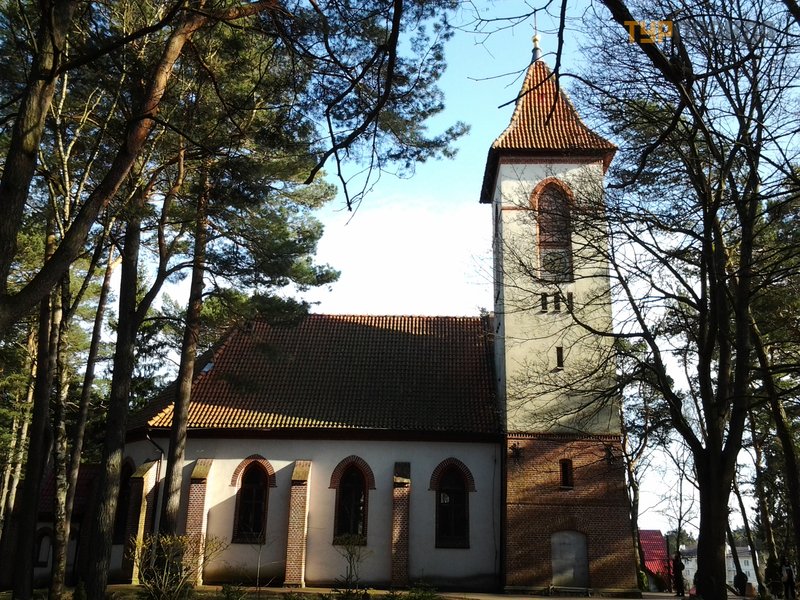
who, like most others in the Kaliningrad region, was reconsecrated to Orthodox from a Lutheran German church: 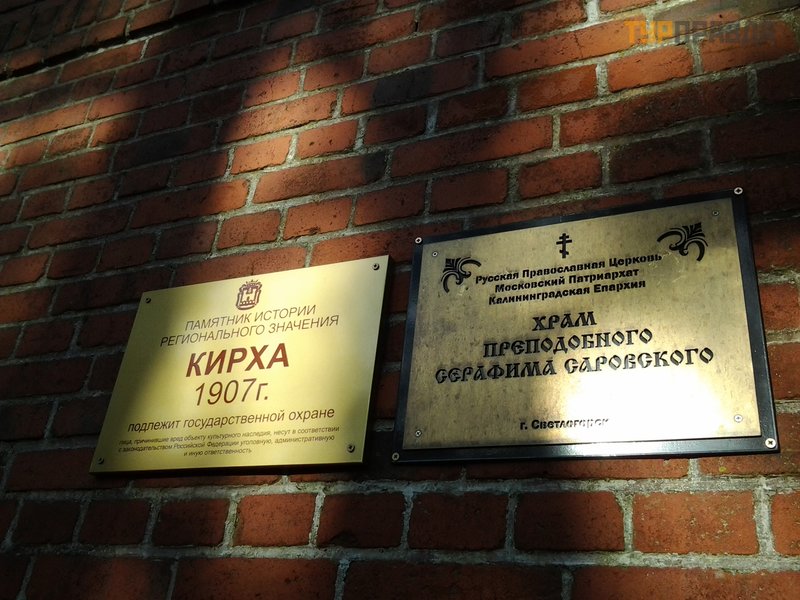
I have already spoken about my attitude to such "re-consecrations". Probably, it would be more correct to build your own temple, and leave the one created by someone else's hands in memory of the people who built it for themselves.
In my free time from rest and treatment, I went to Kaliningrad, to reconstruct the assault on Koenigsberg: 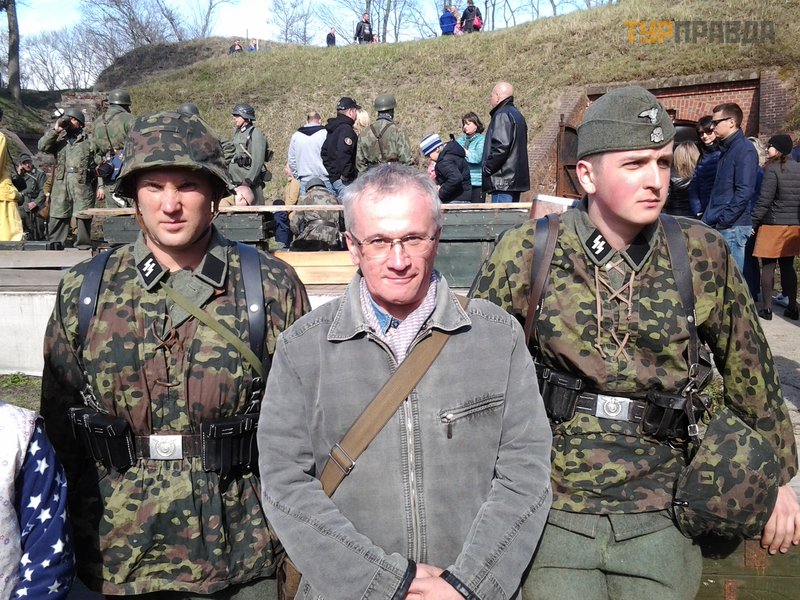
and even wrote Total Dictation: 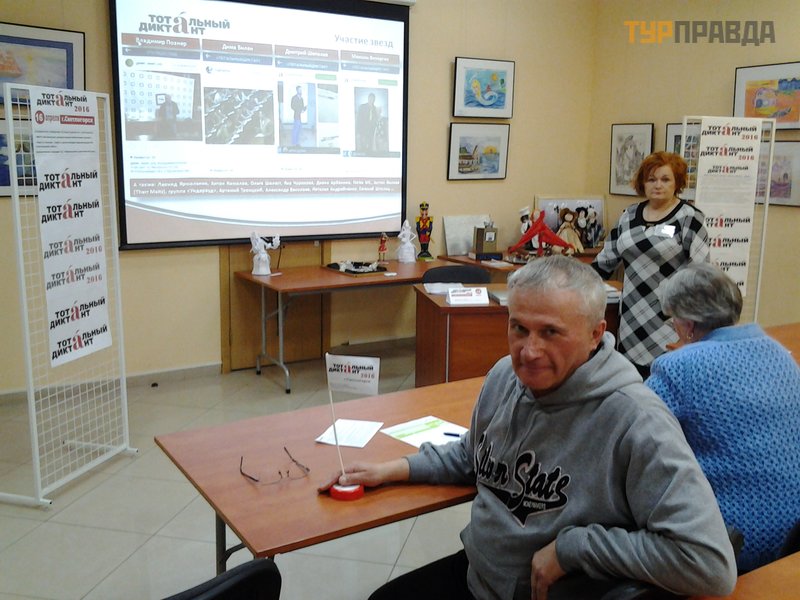
One day I visited Zelenogradsk, where the museum of cats, Murarium, was reopened. 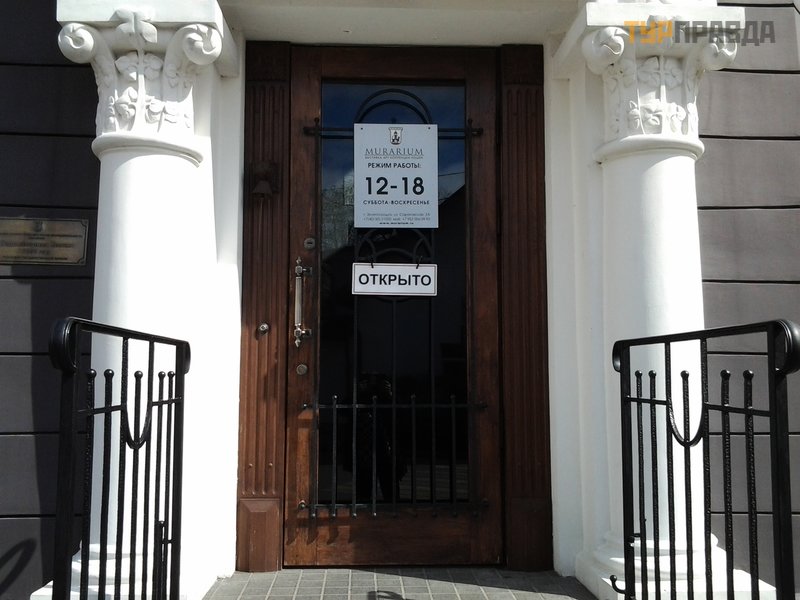
The next story is about him.
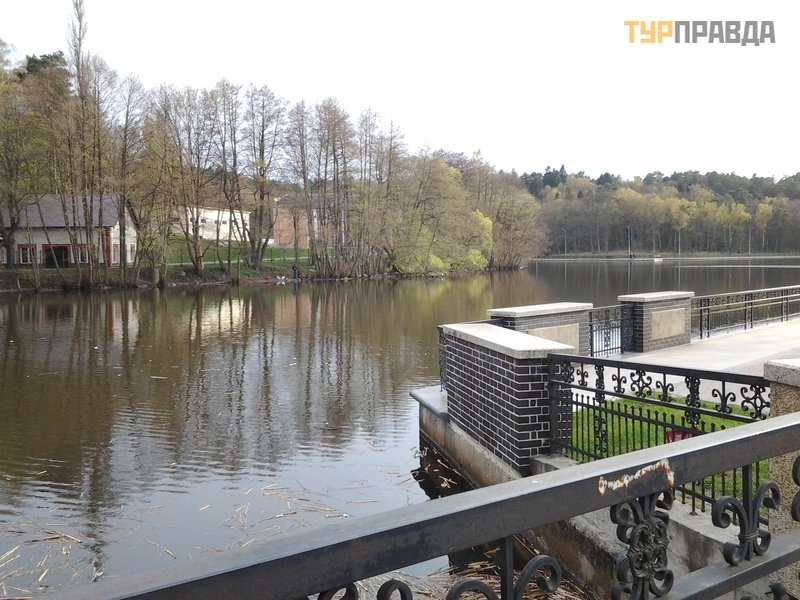
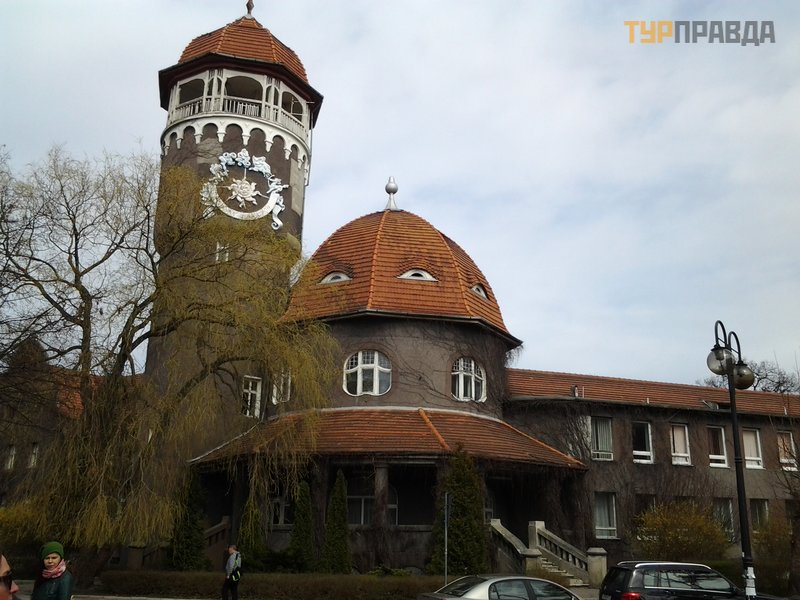
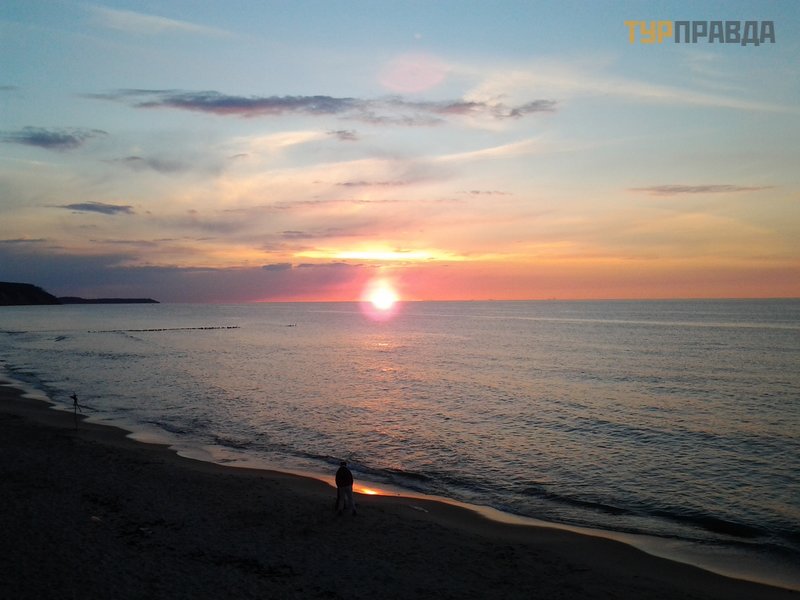
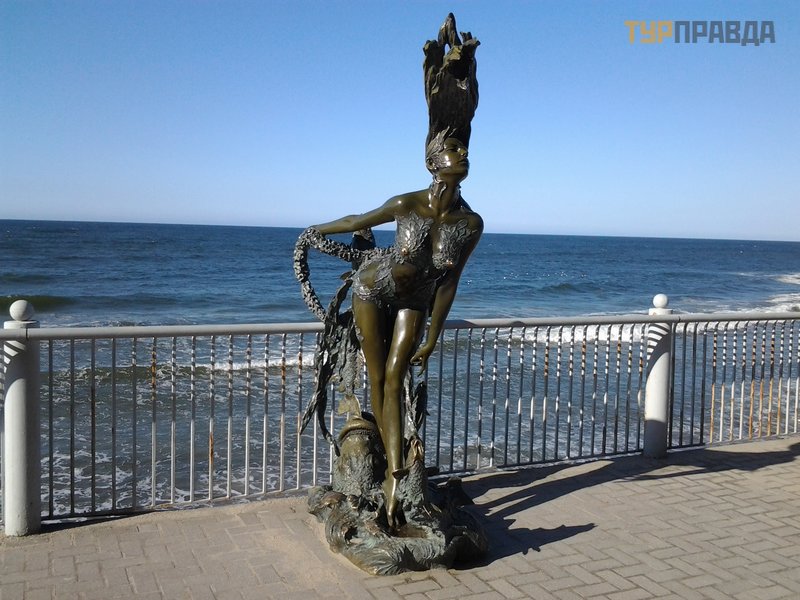
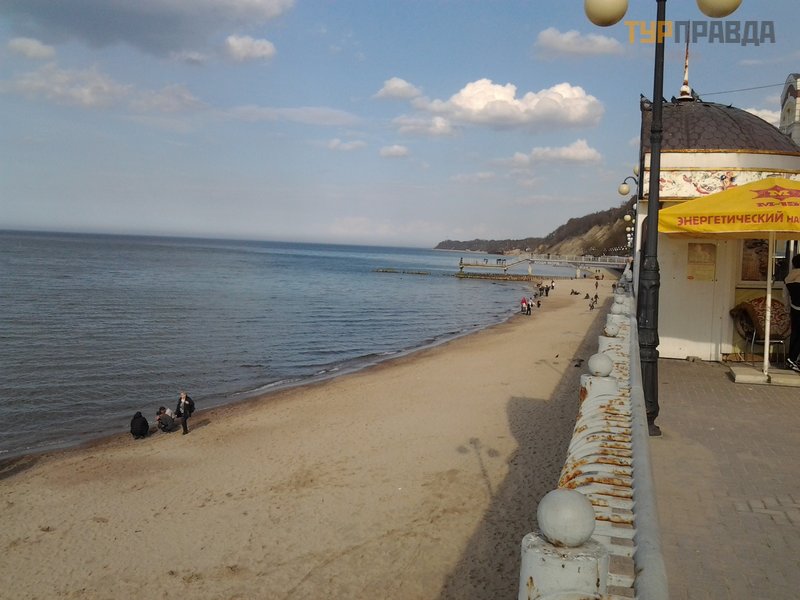
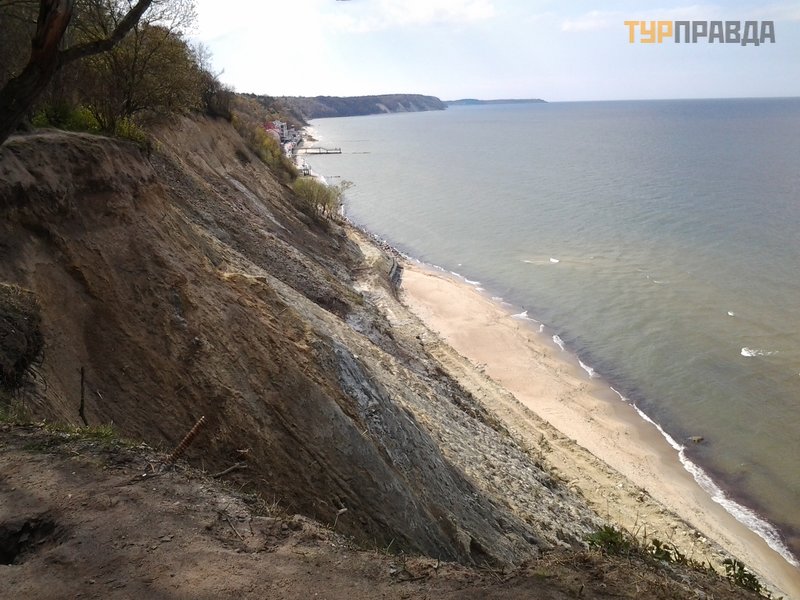
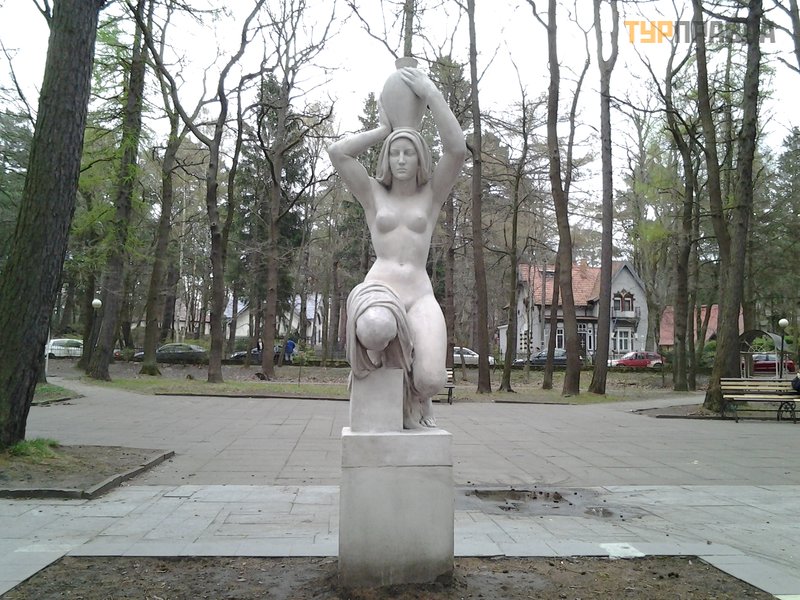
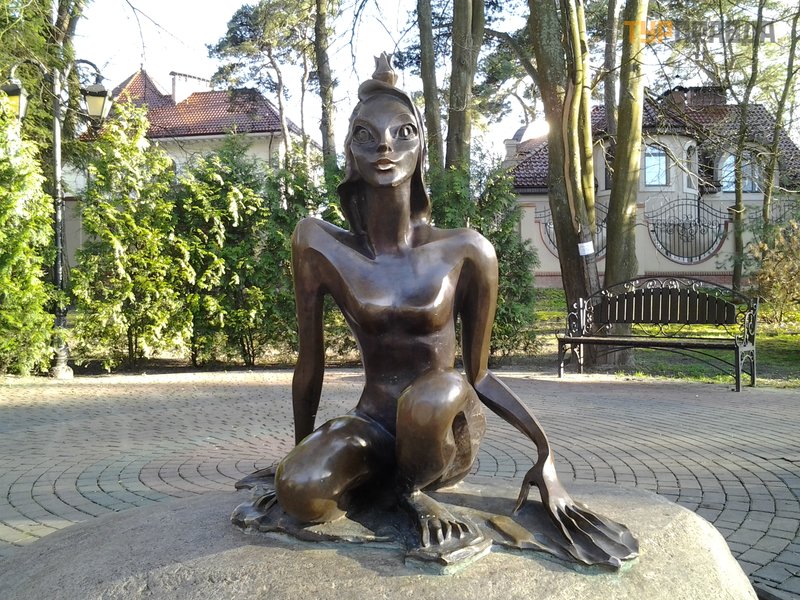
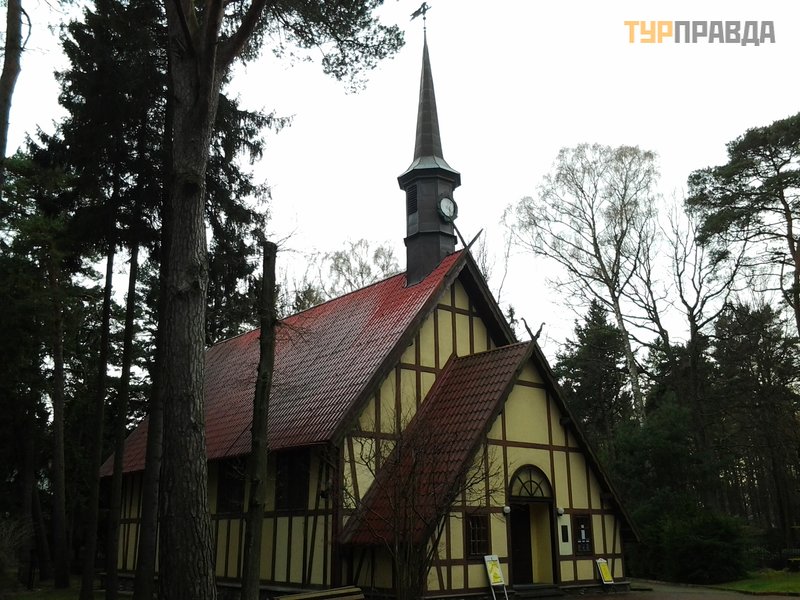
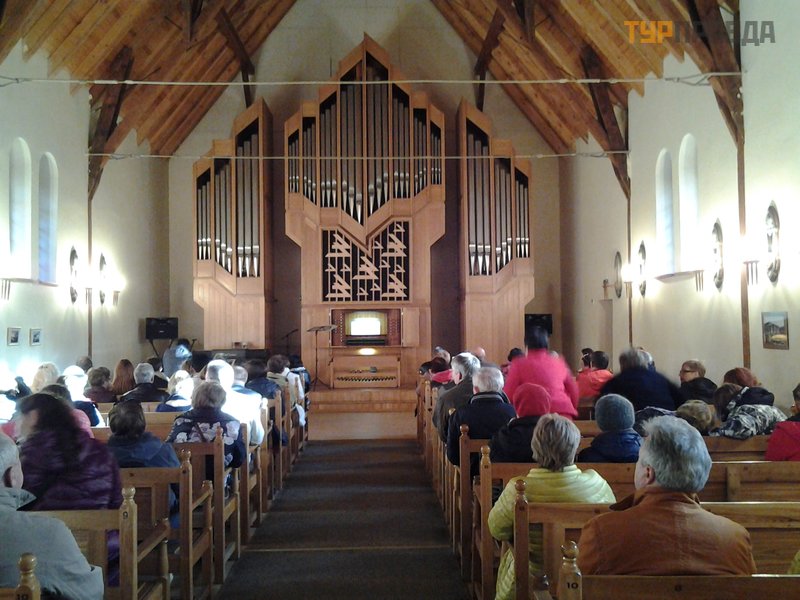
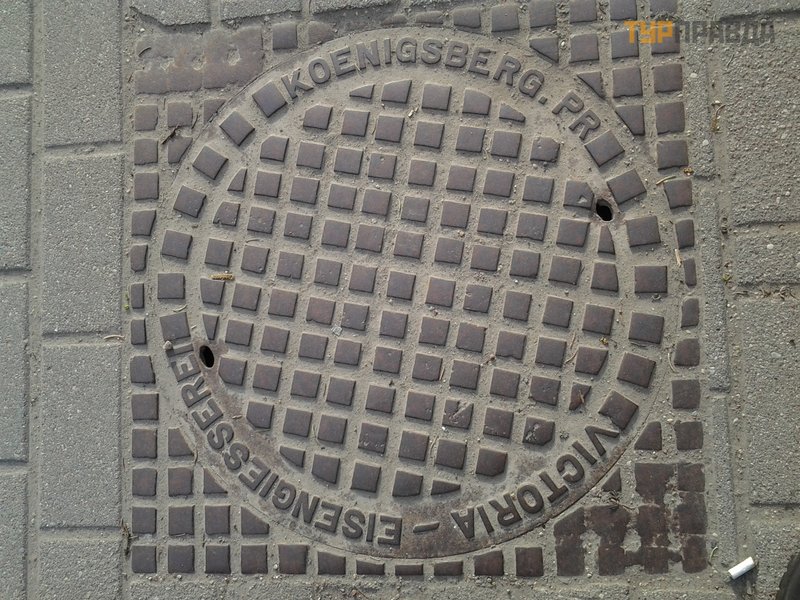
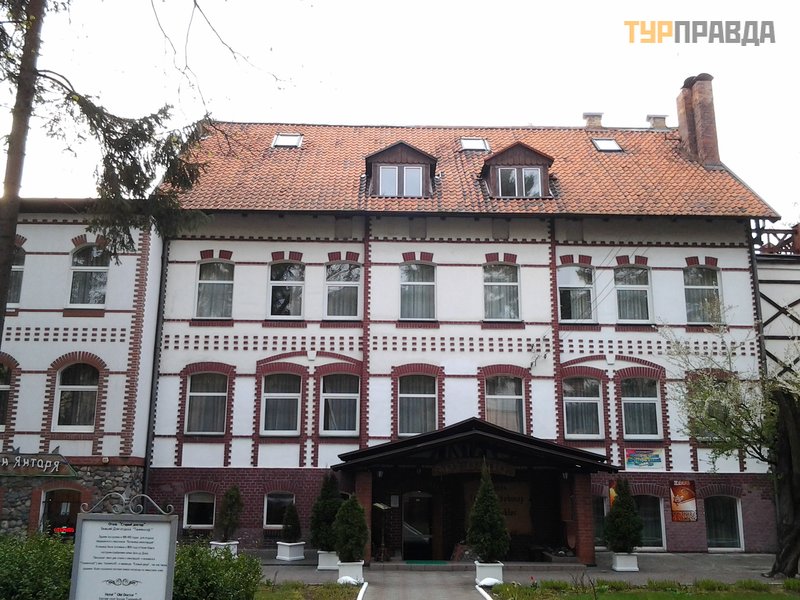
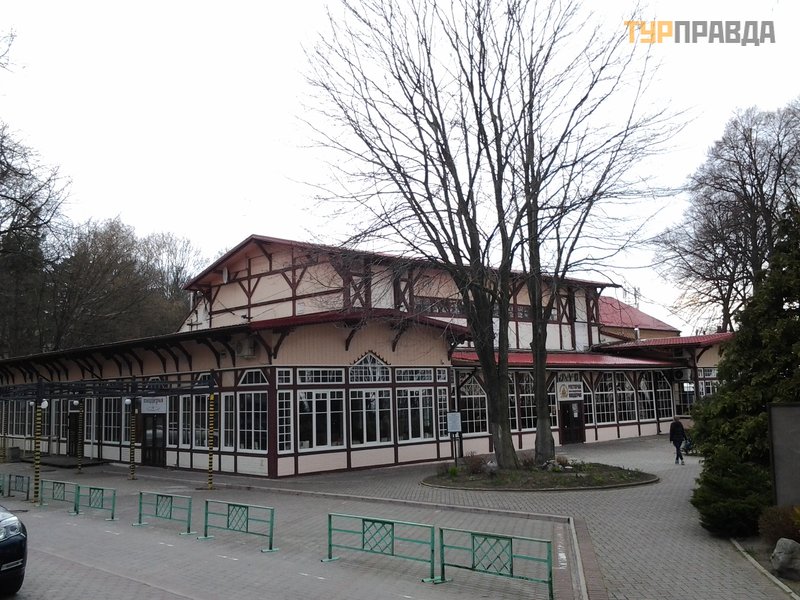
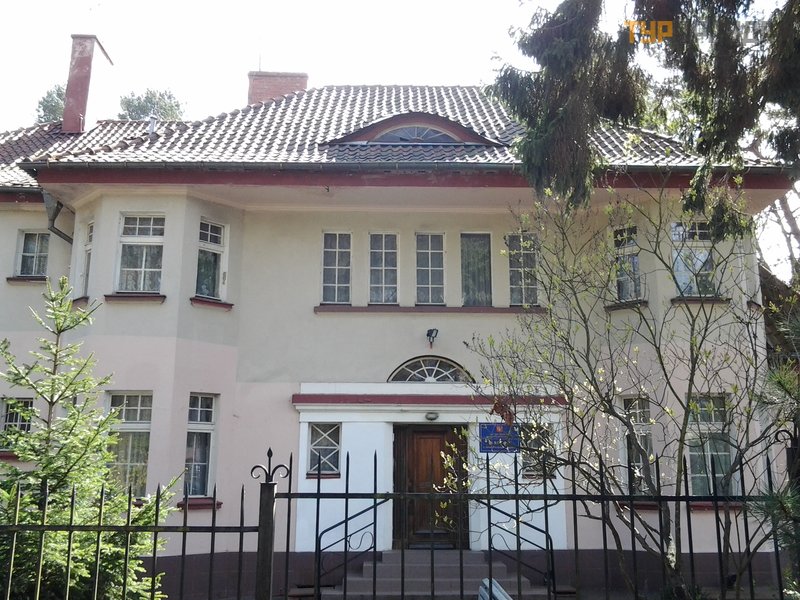
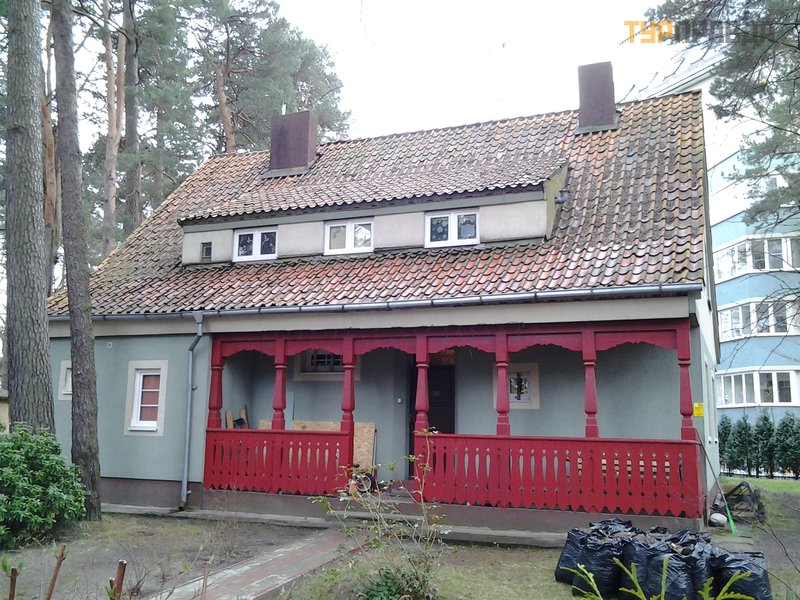 А вот домик весёленькой украинской расцветки, по которой я сразу предположил, что хозяин его - украинец.
А вот домик весёленькой украинской расцветки, по которой я сразу предположил, что хозяин его - украинец. 